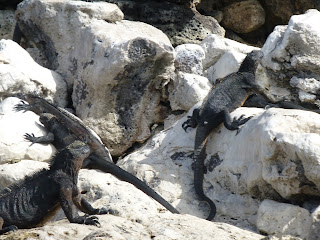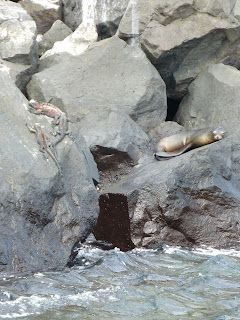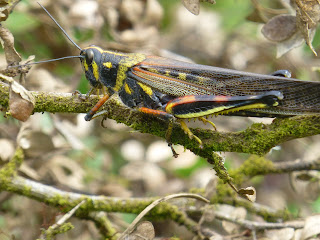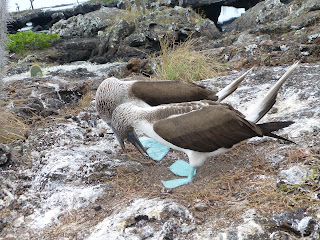Current location: click here
Also known as Archipiélago de Colón (even though Colon never visited the Pacific Ocean), the Galápagos are an archipelago of volcanic islands distributed on either side of the Equator in the Pacific Ocean, 1.000 km west of the south-american continent. They are part of Ecuador and one of UNESCO's World Heritage sites.
The first recorded visit to the islands is dated 1535, when Fray Tomás de Berlanga, Bishop of Panamá, went to Lima Perú to arbitrate in a conflict between the Spanish conquistadores Francisco Pizarro and Diego de Almagro. The visit was reported to the Spanish Empire including a description of the conditions of the islands and the animals that inhabited them however, no special interest was shown by the crown. During about 300 years the islands were mainly used as base for pirates and wale hunters and it wasn't until britain's captain Robert FitzRoy visited them with the HMS Beagle and a young biologist named Charles Darwin on board that the islands were recognized as the special place in earth they still are.
I flew from Guayaquil to Baltra island and took a ferry+bus to Puerto Ayoras on the Santa Cruz island. With 15.000 inhabitants, Puerto Ayora is the largest town in the islands and the main center for touristic activities.
Just upon arrival I contacted a local tour operator and had a taylored packaged setup for the next days. That afternoon was spent visiting a rock formation called Lobería just outside Puerto Ayora. Sea Lions, sea iguanas and (sometimes) shacks can be seen in this place. Next we went back to Santa Cruz island and visited a place called Las Grietas. More sea iguanas and the Frigate-bird were waiting for us.
On the second day we went to the SantaFé island and jump into the water for an amazing snorkeling time. I didn't have an underwater camera and that was somehow a mistake as I couldn't find a place to rent one in Galápagos. Still, I keep this experience (and all other snorkeling done at Galápagos) well "recorded"...
Pelicans are very good flyers despite its less aerodynamic design.
Puerto Ayora also hosts the Carles Darwing scientific station, a "must see" place according to LonelyPlanet. For me it was a bit disappointing as there was very little "scientific" information in display. Such a special location deserves a lot more than just half dozen posters.
Most goods consumed in Puerto Ayora must be brought from mainland. Here a helicopter during an unload operation from a freight ship observed from the coast.
I spent the next morning at Turtle Bay and took the afternoon speedboat to Isabela island. The boat needs 2,5 hours go from Santa Cruz island to Isabela island, and this can be a thought and scary experience depending on the weather and sea conditions. In my case it was calm, without sea-sick passengers for the first time in a week (as I was told by the crew).
Celebrating our safe arrival to Puerto Villamíl in Isabela island.
The next morning we visited Sierra Negra volcano, including a very spectacular tour along the caldera's rim.
In the afternoon went and snorkeled in Concha de Perla, a small and calm bay next to Puerto Villamil with clear waters. We swam next to sea lions and penguins, watched by red rock crabs (Sally Lightfoot Crab).
The last place visited in Isabela was the formation called The Lava Tunnels. The tunnels are the remainder of lava tubes and make the landscape very special. We had low tide and could see sea turtles, sharks and sea iguanas.
Here an israeli version of the evolution from Pithecanthropus Erectus to Homo Sapiens.
Another highlight was the watching the Blue-footed booby mating ritual. It was difficult to miss as it was going on everywhere in the lava rocks around us.
I then left Puerto Villamil in Isabela island and spend the night at Puerto Ayora. I had a seat at the top of the boat (behind the captain) and had the best boat ride of all. The next morning I took another speedboat to San Cristóbal island in order to take my flight back to Guayaquil.
This was the end of my 6 days experience in this amazing place and I would highly recommend it. It is surely one of the highlights of this trip.


























































































No comments:
Post a Comment